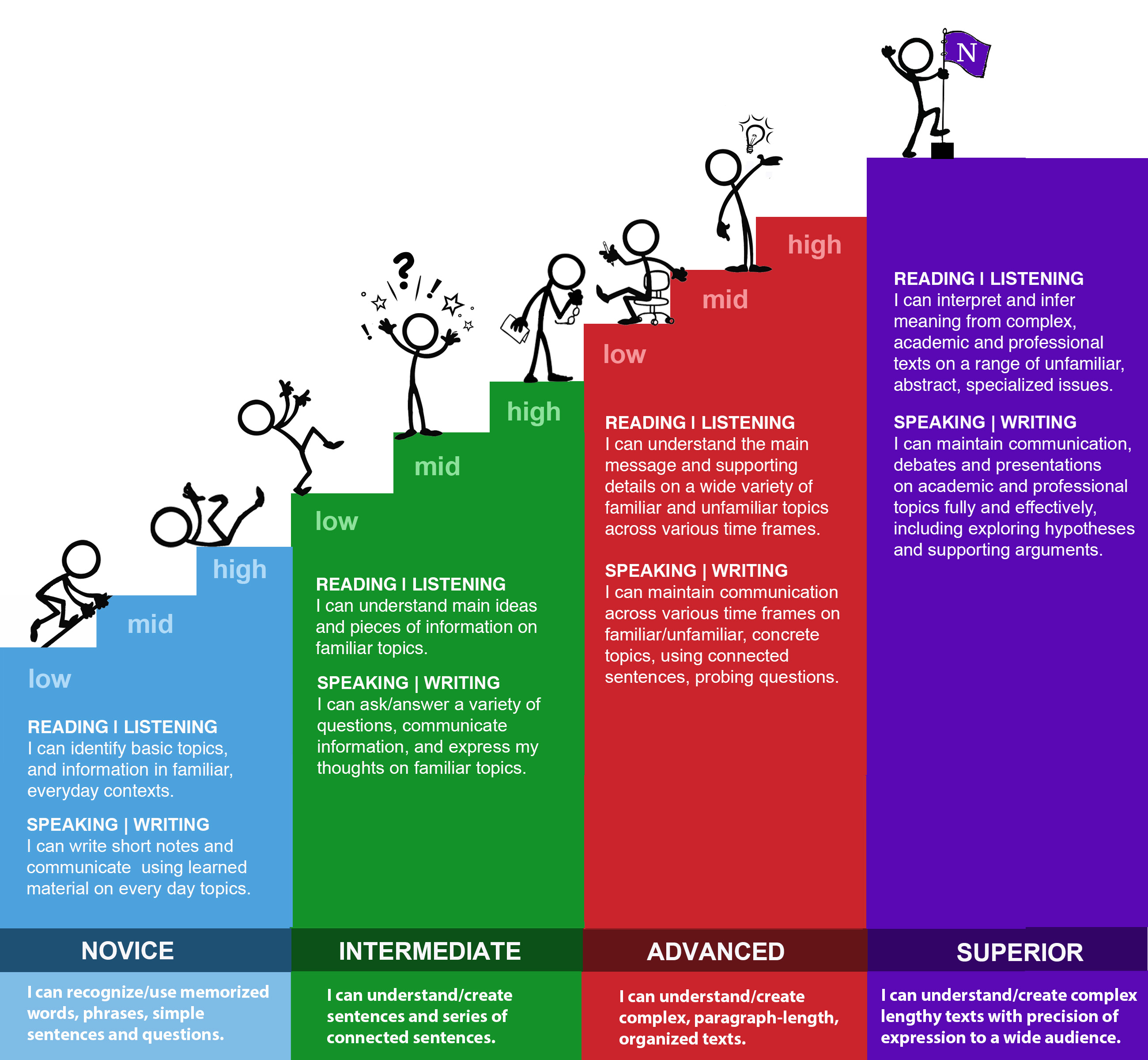Language learning and proficiency
LANGUAGE PROFICIENCY
 When somebody asks you how well you speak a foreign language, it is sometimes difficult to describe it in quantifiable measures. “I am almost fluent”, or “I can read better than I can speak” is not very descriptive when trying to find the right class to continue studying or applying for a job. That is why having a universal way to talk about foreign language skills can help you understand the progress you are making and help you stand out in a crowded field of job candidates or school applicants. It also offers you a great opportunity to get motivated and take your new language to the next level.
When somebody asks you how well you speak a foreign language, it is sometimes difficult to describe it in quantifiable measures. “I am almost fluent”, or “I can read better than I can speak” is not very descriptive when trying to find the right class to continue studying or applying for a job. That is why having a universal way to talk about foreign language skills can help you understand the progress you are making and help you stand out in a crowded field of job candidates or school applicants. It also offers you a great opportunity to get motivated and take your new language to the next level.
In order to assess general language skills, we use the term “proficiency”, the ability to use language in real-world situations in a spontaneous interaction and non-rehearsed context. The areas of fluency, accuracy, and breadth of vocabulary are important criteria in such an assessment.
LANGUAGE PROFICIENCY SCALES
There are two important scales to evaluate language proficiency, the first one is mostly used in the US, the second one mostly in Europe:
- The American Council on the Teaching of Foreign Languages (ACTFL) scale has five proficiency levels (novice, intermediate, advanced, superior and distinguished). The first three levels are each split into low, medium and high sub-levels.
- The Common European Framework of References (CEFR) has six levels: A1 and A2 (Basic level), B1 and B2 (Independent level), C1 and C2 (Proficient level).
Both levels are based on can-do statements (ACTFL | CEFR), statements that describe what a language learner can do with language on each level in terms of speaking, writing, listening, and reading. The graphic below summarizes the main ACTFL levels including the sublevels: "low" indicates that the speaker exhibits the level tasks but not consistently; "mid" indicates that the speaker exhibits the level tasks consistently; "high" indicates that the speaker exhibits the level tasks consistently and can also do some of the higher-level tasks. (There is an approximate correspondence between the ACTFL and CEFR scales: Intermediate Low = A2; Intermediate Mid = B1.1; Intermediate High = B1.2; Advanced Low = B2; Advanced High = C1.) Because our students quite often supplement class work with lengthy periods of study abroad, we provide both scales, ACTFL and CEFR, when describing target levels for our courses.

